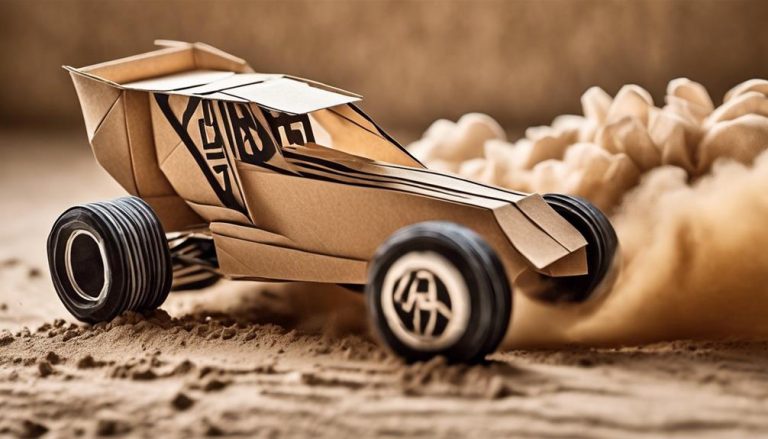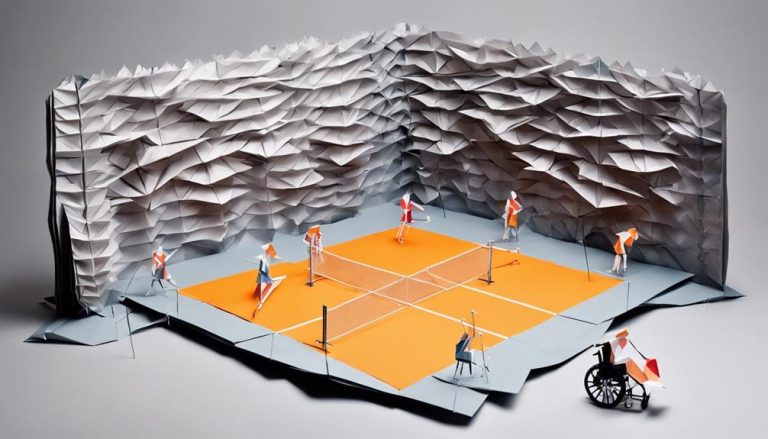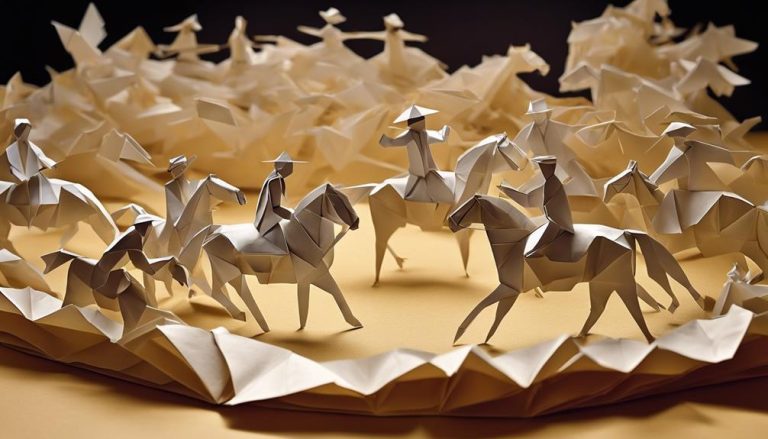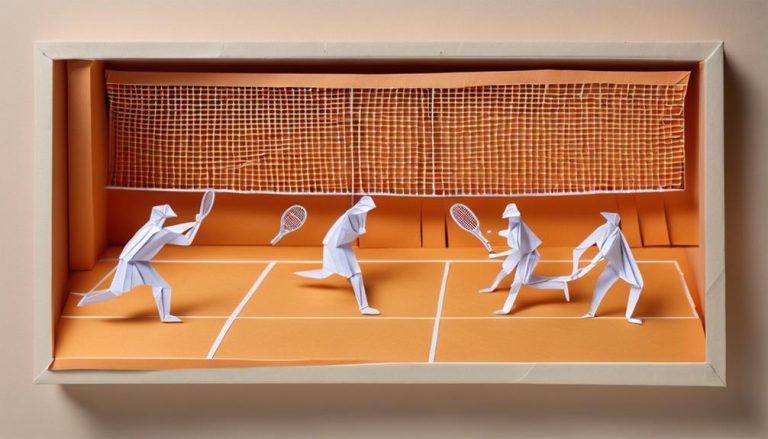General Rules of Western Pleasure
Western pleasure is an equestrian event that deserves more recognition for its blend of technique, artistry, and bond between horse and rider. Competitors guide horses through gaits, maneuvers, and transitions with subtle cues and aids. The fluidity, finesse, and relationship between horse and rider captivates audiences. By understanding the judging, horsemanship, and training involved, anyone can gain an appreciation for this exceptional discipline.
This article covers fundamentals of western pleasure to showcase why it warrants more mainstream enthusiasm. We’ll explain proper attire, desired gaits, various classes, and judging criteria. Insight into horsemanship skills and needed training provides new perspectives. Once aware of the nuances between pleasure and other western events, the sheer focus, feel, and connection shine through. Western pleasure has earned distinction as more than just everyday riding. Let’s begin by looking at the standard gaits performed in competitions.

Saddle and Equipment
Making sure you have the proper saddle and equipment is key to successful Western Pleasure riding. Therefore, proper fitting is essential, as is taking the time to get your horse accustomed to the equipment. Show preparation should also include ensuring that all the necessary tack is in working order.
When selecting a saddle, look for one that’s comfortable for both you and your horse. It should have a seat deep enough to keep you balanced, while also providing enough leg room. Make sure the stirrups are the correct size and that your feet fit in them well. Additionally, the saddle should have minimal padding, as too much can cause your horse to become uncomfortable.
You also need to ensure that all the other equipment is suitable for the horse. The bridle should fit correctly and not rub or pinch the horse’s face. The reins should feel comfortable in your hands. You may also want to consider using a breastplate or martingale. As for show attire, the rider should wear a hat, boots, and spurs, and the horse should have a neat and proper show blanket.
Having the proper saddle and equipment is important for both you and your horse. Proper fitting is essential for the comfort and safety of you and your horse. Taking the time to get your horse accustomed to the equipment is also important. Show preparation should include checking all tack and making sure it’s in working order. Finally, selecting the right show attire is essential to ensure you look your best in the show ring.
Horse Preparation
Properly preparing your horse is essential for successful Western Pleasure riding. Grooming is a key part of the process. Brush grooming and mane trimming are two essential tasks. Brush grooming helps the horse’s coat look slick and clean. You should use a brush with natural bristles and a comb to brush the horse’s coat. Mane trimming is also important. The horse’s mane should be combed and trimmed so that it looks neat and tidy.
| Grooming | Trimming |
|---|---|
| Brush | Mane |
| Comb |
When preparing your horse, it is important to use the right supplies. For brushing, look for brushes with natural bristles. You can also use a comb to get into hard-to-reach places. For mane trimming, use a thinning shear or a mane comb. Other helpful items include a hoof pick, a curry comb, and a dandy brush.
In addition to grooming your horse, you should also consider giving him a bath. Bathing your horse helps to keep his coat looking clean and will help to prevent skin issues. When bathing your horse, use a mild shampoo and make sure to rinse all of the shampoo from his coat.
Finally, make sure to check your horse for any cuts or sores. These should be tended to immediately to prevent infection.
Properly preparing your horse is an important step in successful Western Pleasure riding. Grooming, trimming, and bathing are all essential tasks, and it is important to use the right supplies. Additionally, be sure to check your horse for any cuts or sores. Following these steps will help ensure that your horse is ready to perform at his best.
Horse Posture
Second, you need to ensure your horse has proper posture. The most important part of training a horse for Western Pleasure is to ensure that it carries itself correctly. This means that the horse must have its head held in a level position with its neck arched, and its back should be level and slightly arched. Grooming techniques such as stretching exercises and massage can help the horse to maintain its posture while competing.
It is essential that the horse is taught to respond to light commands from the rider, so that it can relax into its proper posture. This is especially important when the horse is going around the arena, as it must remain in its correct posture while responding to the rider’s commands. A horse that isn’t properly trained won’t be able to keep its head level and will be at a disadvantage during competition.
The horse should also be taught to carry its weight evenly across its back, so that it doesn’t become unbalanced or uncomfortable. This will ensure that the horse is able to move in a smooth and steady manner, while maintaining its posture.
Finally, the horse should be taught to move with a slow, steady pace, and to keep its head and neck in a steady position. This will help to ensure that the horse is able to move at a consistent pace and maintain its posture while going through the various patterns that are required in competitions.
Gait and Speed
When it comes to competing in Western Pleasure, it’s important to ensure that your horse has the right gait and speed. The lope and canter are the two primary gaits used in western pleasure classes, and they’re used to demonstrate the horsemanship and etiquette required for the sport.
To perfect the lope and canter, the horse should have a steady, balanced stride. The lope should be moderately slow and relaxed, while the canter should be fluid and consistent. Horses should maintain the appropriate head and neck position while performing the gaits, keeping the head slightly lower than the withers.
It’s also important to be aware of the speed of the horse. In a western pleasure class, the horse should be traveling at a slower speed than in other disciplines. A horse should never be galloped in a western pleasure class, as this is considered to be too fast.
Here is a breakdown of the appropriate gait and speed for western pleasure classes:
- Lope: Moderate, relaxed, and steady
- Canter: Fluid and consistent
- Speed: Slower than other disciplines
- Head and Neck Position: Lower than the withers
- Horsemanship and Etiquette: Showcased throughout the class
Arena Etiquette
You need to practice proper arena etiquette, and that means maintaining a steady pace throughout the class. This includes keeping your horse on the rail at the correct speed, not cutting off the corners, and maintaining the same speed and gait throughout the pattern. |
| Socializing Etiquette | Clothing Etiquette |
|---|---|
| Be courteous and polite | Wear a clean and neat outfit appropriate for the division |
| Don’t talk to other exhibitors while in the arena | Keep your hat on and your head up at all times |
| Respect the judge and the other exhibitors | Don’t fidget with your reins – keep them in one hand |
In addition, it is important to be aware of your surroundings and maintain a good attitude at all times. Show your respect for the judge and other exhibitors by allowing them to enter and exit the arena before and after you. Make sure to be aware of your horse’s behavior as well. If your horse is misbehaving, it is important to take control and correct the issue. Finally, it is important to project a positive attitude and be kind and courteous to all exhibitors. Good arena etiquette is essential to success in the show ring.
Showmanship
You’ll need to show off your horsemanship skills in western pleasure, so be sure to practice regularly. Showmanship requires a few key elements to be successful. It’s important to have proper attire, including a tailored shirt and western hat, as well as having a well-mannered horse that’s responsive to appropriate cues. To that end, here are five tips to help you make a good impression:
- Make sure your horse is well groomed and well-mannered.
- Have a good, balanced seat in the saddle.
- Make sure your cues for your horse are subtle and precise.
- Practice being in control of your horse at all times.
- Put together an attractive, coordinated outfit.
Developing good showmanship skills takes lots of practice and patience. It’s important to focus on your posture and control of your horse. Make sure you practice riding with proper form, and that your cues are subtle and effective. Maintaining a good, balanced seat in the saddle is essential for good showmanship.
In addition to riding skills, you’ll need to make sure that you and your horse are appropriately dressed. The proper attire should be tailored to the western pleasure event. You should select a hat, shirt, and other items that coordinate to create an attractive, unified look.
Showmanship is an important factor in western pleasure events. To ensure that you make a good impression on the judges, make sure that you practice riding with proper form, have an attractive, coordinated outfit, and have a well-mannered horse that’s responsive to subtle cues. With the right preparation, you can be sure to shine in the western pleasure arena.
Reining
Reining is a key aspect of western pleasure, so you’ll need to master it. Reining patterns are intricate maneuvers that show the horse’s responsiveness and athleticism. As the rider, your goal is to guide the horse through the maneuvers with minimal effort. It’s important to remember that rein placement plays a big part in this. To create a good rein placement, keep your hands in front of your hips and your reins close to the horse’s neck. This will help ensure you have constant contact with the horse and can easily guide them through the pattern.
The most common maneuvers seen in reining are circles, lead changes, spins, and stops. Circles include circles to the left and right, as well as large and small circles. Lead changes involve moving from one lead leg to the other. Spins involve the horse spinning in a small circle, usually done in a four-beat gait. Stops involve the horse coming to a complete halt, usually done on the hind legs.
It’s important to practice your reining patterns regularly. This will help you become more familiar with the maneuvers and will also help you become more confident in your abilities. A good way to practice is to ride with a more experienced rider. They can help you learn the correct techniques and provide tips on how to improve your ride.
When it comes to western pleasure, Reining is an important skill to master. With practice and dedication, you’ll soon be able to guide your horse through the patterns with ease and confidence. Remember to keep your hands in front of your hips and your reins close to the horse’s neck for a good rein placement. With these tips, you’ll be able to master the Reining patterns and put on a great show.
Trail Riding
Along with Reining, trail riding is an important part of western pleasure. Trail riding is a great way to explore nature while also honing your horsemanship skills. It’s an excellent way to build a strong relationship with your horse and deepen your understanding of horse behavior.
Here are some tips for successful trail riding:
- Groundwork: Before heading out on a trail ride, take the time to do some groundwork with your horse. Spend some time grooming and desensitizing your horse to objects and noises they may encounter on the trail.
- Trailering: Trailering your horse to a trail ride can also help to desensitize them to the experience. Make sure to check your trailer and equipment for any potential safety hazards before you set off.
- Preparation: Make sure you’re properly prepared for your ride. Bring plenty of water and snacks for yourself and your horse, as well as a first-aid kit for any potential emergencies.
- Safety: Before you and your horse set out on the trail, make sure you know the terrain and the trail rules. Always ride with a buddy, and let someone know where you’re going and when you expect to be back.
- Enjoyment: Remember, trail riding should be fun and enjoyable for you and your horse. Take your time and enjoy the scenery. Make sure to stop and rest if you or your horse become tired.
Trail Obstacles
As you ride the trail, you’ll need to be prepared to encounter various obstacles, so make sure you and your horse are up to the challenge. Western Pleasure trail riding has its own unique set of rules and guidelines that you’ll need to be familiar with before setting out.
Gear selection is an important part of these rules. You and your horse should be outfitted with the proper equipment to ensure a safe and enjoyable trail ride.
When it comes to trail obstacles, the most common are natural ground obstacles. This includes logs, rocks, streams, hills, and other similar terrain. You’ll need to be prepared to maneuver these obstacles and be aware of their potential dangers. Your horse should be experienced enough to confidently navigate these obstacles without any hesitations, so make sure they’re comfortable and well-trained.
Other potential trail obstacles include man-made ones, such as fences or gates. These should be treated with caution and respect, and you’ll need to be aware of any signage or instructions that are posted. If you’re unsure of the proper way to handle these obstacles, then it’s best to turn around or find an alternate route.
Finally, don’t forget to check your gear and equipment before and after every ride. Make sure all of the straps and buckles are secure and that you have the proper safety items with you. This includes a first aid kit, water, a phone, and any other items you may need.
Taking the time to familiarize yourself with the general rules of Western Pleasure trail riding will ensure you and your horse have a safe and enjoyable ride. With the proper gear selection and knowledge of ground obstacles, you can be prepared to tackle any trail obstacle that comes your way.
Safety Guidelines
When it comes to Western Pleasure trail riding, it’s important to follow safety guidelines to protect you and your horse. Here are some key points to keep in mind to ensure a safe and enjoyable ride:
- Rider attire: Wear clothing that’s comfortable and appropriate for the weather as well as riding boots that are durable and provide ankle support. Make sure to wear a helmet that fits properly and is approved by the American Society for Testing and Materials (ASTM).
- Paddock protocol: Before mounting your horse, check the area for any debris or foreign objects that could cause harm. Also, make sure the saddle and bridle are properly fitted and secure.
- Stay alert: Be attentive to your surroundings at all times and avoid loud noises that could startle your horse. Also, be aware of other riders in the area and maintain a safe distance from them.
- Know your horse: Be familiar with your horse’s behavior and temperament, and know how to control them in the event of an emergency.
- Respect the land: Follow all trail signs and be respectful of the environment, leaving no trace of your ride.
Frequently Asked Questions
What Should I Wear for a Western Pleasure Event?
When attending a western pleasure event, the clothing you wear is important. You should dress appropriately for the barn etiquette, as well as the show grooming.
A collared shirt, denim jeans, and cowboy boots are a traditional and timeless look. A dress or skirt with boots is also acceptable, as long as it isn’t too formal. Make sure to keep your outfit clean and neat, and avoid wearing bright colors or patterns that may distract from your horse.
The goal of western pleasure is to look comfortable and relaxed, so choose clothing that helps you achieve that.
How Can I Tell if My Horse Is Ready for a Western Pleasure Event?
You are your horse’s guide and teacher. To know if he’s ready for a western pleasure event, observe him carefully and correct any mistakes.
Training techniques such as teaching him transitions, patterns, and how to move off your leg can help both of you succeed.
Think of the journey as a metaphor: you have the map and the compass, and your horse is the vehicle. You must be in sync to reach the destination.
Put in the work and be patient, and you’ll reap the rewards.
What Are the Differences Between Western Pleasure and Reining?
When considering the differences between western pleasure and reining, it’s important to first consider the type of horse involved. Gaited horses such as Tennessee Walkers, Friesians, and Paso Finos are often seen in western pleasure, while any breed of horse is typically seen in reining.
Additionally, the show etiquette for each event is quite different. Western pleasure has a strong focus on manners and movement, with riders typically maintaining a slower, more leisurely pace and horses responding to the lightest of cues.
Reining requires more dramatic movements such as sliding stops, spins, and rollbacks, all performed at a relatively fast pace.
What Tips Can I Use to Improve My Horse’s Posture for Western Pleasure?
You can improve your horse’s posture for western pleasure by exercising regularly and teaching it cues. Think of it as a dance: the horse is the partner you need to lead and guide.
Like dancers, horses need to be trained and taught how to move. You can start by teaching your horse to cue off your body movements and leg pressure, and to follow your lead.
Exercising your horse regularly will help keep it fit, agile, and responsive to your commands. With practice and patience, you can help your horse learn the graceful and elegant movements of western pleasure.
What Safety Precautions Should I Take When Participating in Western Pleasure?
When participating in western pleasure, it’s important to take safety precautions.
Horsemanship, training regimens, saddle fitting, equipment care, and groundwork techniques all play an important part in rider safety.
Make sure your horse is well-trained and is responsive to commands.
Your saddle should fit your horse correctly and be checked for wear and tear regularly.
Ensure that all your equipment is in good working order and that you have properly cared for it.
Western pleasure riding is an enjoyable and rewarding equestrian activity. But it involves more than just sitting back and enjoying the ride.
From the equipment and horse preparation, to the gait and speed, arena etiquette, and safety guidelines, you must be sure to follow the general rules of western pleasure.
To ensure a safe and enjoyable ride for both you and your horse, it is important to master these techniques.
The rewards of mastering these techniques are priceless. So, saddle up and enjoy the ride!






